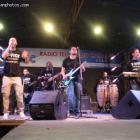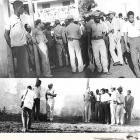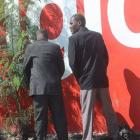ADVERTISEMENT
Photos
Flag of Venezuela and Jacmel, haiti
Did you know that the original design of the flag was first flown on March 12, 1806 not in Venezuela but in the bay of Jacmel, Haiti.
The city of Jacmel is of great importance to the independence of Venezuela. Jacmel was where Francisco de Miranda actually created the first Venezuelan flag.
Picture of Ti-Mouillage Beach in Jacmel
This is a picture of the beautiful Ti-Mouillage Beach near the city of Jacmel. It is licated between Jacmel and Cayes-Jacmel. Just like this one, the city of jacmel is fortunate to have some of the best beaches in Haiti
There are miles of undeveloped coastlines with white sands and clear water
The political dimension in Haitian carnival
The Carnival in Haiti as well as in many countries of the world has many observable and unique elements which make the carnival something that is specific to each country.
In Haiti, our carnival many features which make it recognizable even to those who are not very familiar with it.
Carnival in Haiti has a very strong political dimension which is found in many of the songs as well as the carnival costumes
Madi Gras Ciray
I have not been able to fing meaning of "Madi Gras Ciray", in another term, people who just paint themselves in black as a Carnival Costume. Does anyone have a meaning for it?
I was told that this custume is popular in Haitian Carnival . Why would you paint yourself in such a way for the Carnival
The story of Chaloska and Carnival
Here is a picture of the famous Chaloska. This came from the story of Chief Charles Oscar in the city of Jacmel. He was a military commander in charge of the police in Jacmel.
Oll you see here in this picture are characteristics of the individual. He was a distinct figure in that Chaloska was tall and strong, with big teeth
Kanaval des Etudients in Haiti
Here is a picture of Kanaval des etudients in Haiti
Many people remember the time of Carnival des etudients and think that the flavor is no longer.
This was the time when the various schools in Haiti had a time to demonstrate and sell their school to the public
This was a time in may cities around the country when some of the best carnival floats and music would go around the city with colorful dances and musics
A 1952 image of Carnival in Cap-Haitian
Provided to us by the resourceful Edgar Bernadin, you are looking at at a picture of a Carnival parade in the city of Cap-Haitian back in 1952. This would bring a lot of souvenirs to those from that generation who are able to see this picture. There is a great difference between today Carnival and back in 1952
Les Difficies de Petion-Ville
Here is a souvenir of the good old days. This was the time when Carnival in Haiti requires masks to be part of it.
We would like some input from those who have been there during that time. Please let me know what you see as different today from the days when such band like Difficiles, Gypsies and many others of the old generation were participating in Haiti Carnival
Haitian Football, 1934 Haiti National Soccer Team
Here is a picture that I want to share with you. What you are looking at is the National Soccer team of Haiti in 1934.
Standing in the picture going from left to right, you find: Franck Beauvoir, Wooley, Artaud Toureau, Dr Tovar, Fritz Berrouet, St Fort, Dr. M. Sylvain.
Below, the list goes as: Georges Audant, Antoine Champagne, Edouard Esper, Ellio Denis.

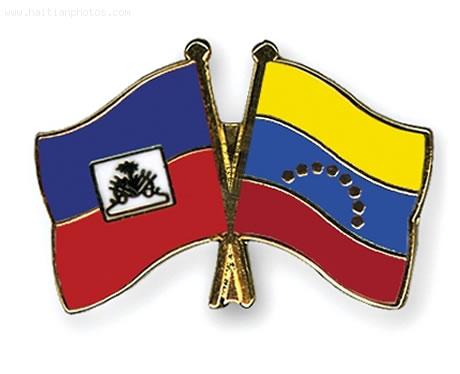
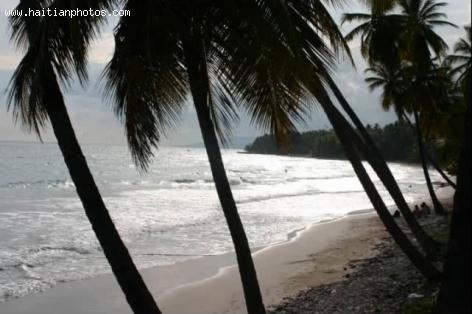
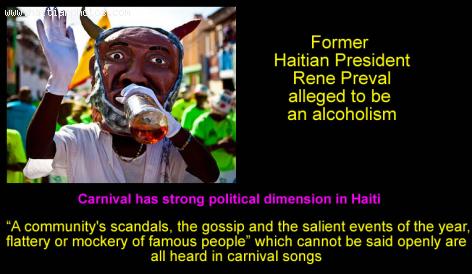
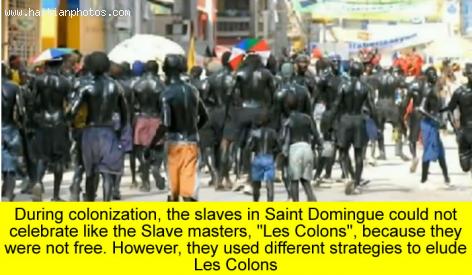

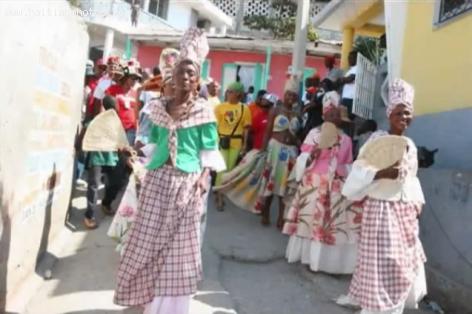



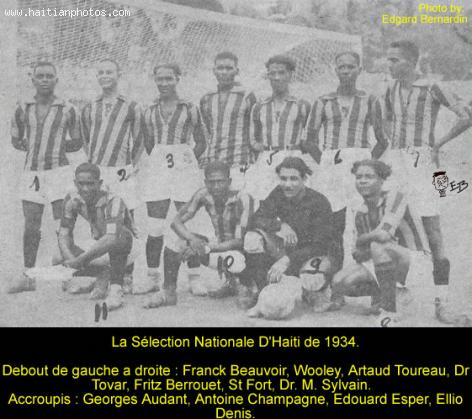
 Who will be the next president of Haiti?
Who will be the next president of Haiti?  Ernst 'ZeNono' Jean-Baptiste wants to replace Sepp Blatter as...
Ernst 'ZeNono' Jean-Baptiste wants to replace Sepp Blatter as...  Charlemagne Peralte betrayed by Jean-Baptiste Conze
Charlemagne Peralte betrayed by Jean-Baptiste Conze  Haitiano-Japanese Naomi Osaka wins the US Open against Serena...
Haitiano-Japanese Naomi Osaka wins the US Open against Serena...  Dr. Michaëlle Amédée Gédéon is dead
Dr. Michaëlle Amédée Gédéon is dead  Jovenel Moïse nominated Jean Henry Céant as prime minister of...
Jovenel Moïse nominated Jean Henry Céant as prime minister of...  Dr. Henri Ford, First Haitian Dean At University of Miami Med...
Dr. Henri Ford, First Haitian Dean At University of Miami Med...  Former PNH Chief, Godson Orelus, arrested for illegal arm...
Former PNH Chief, Godson Orelus, arrested for illegal arm... 
